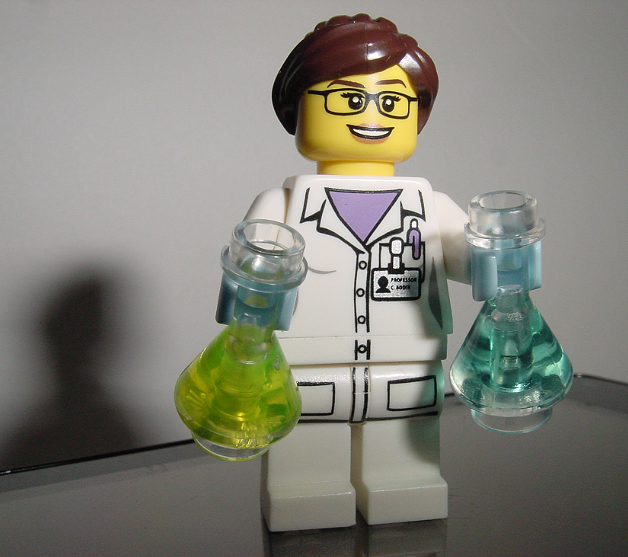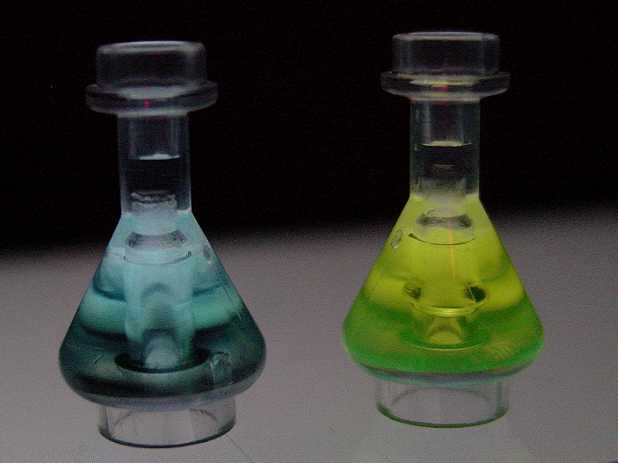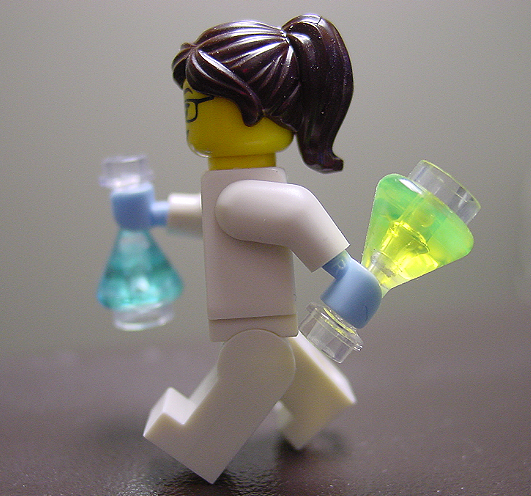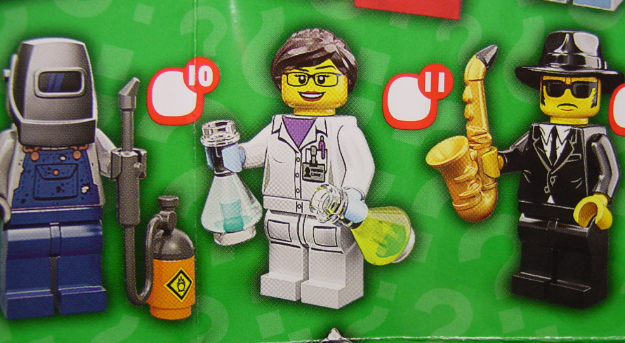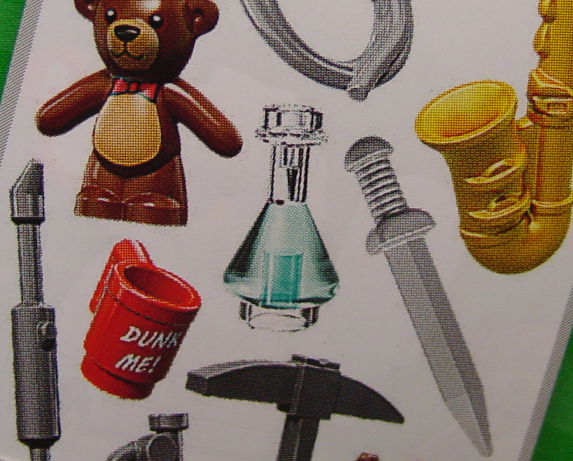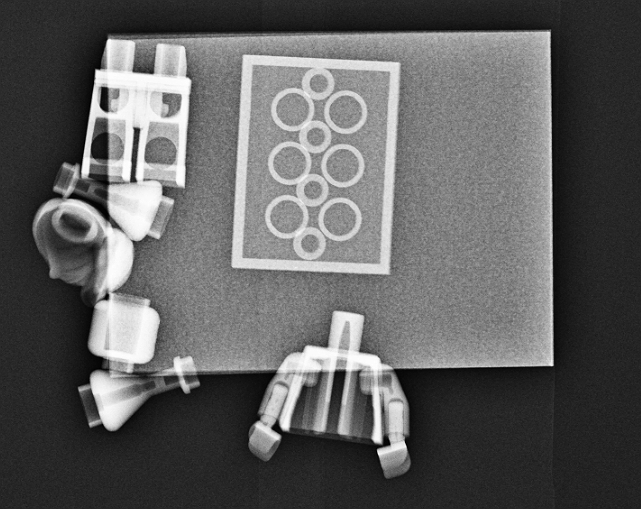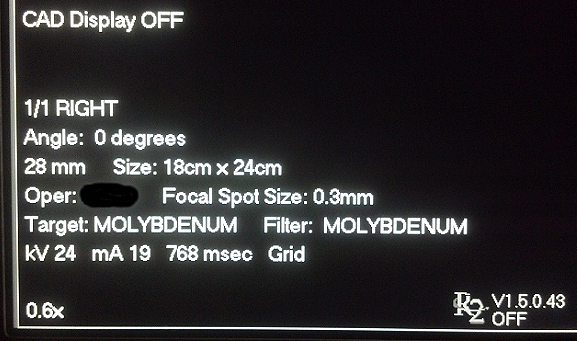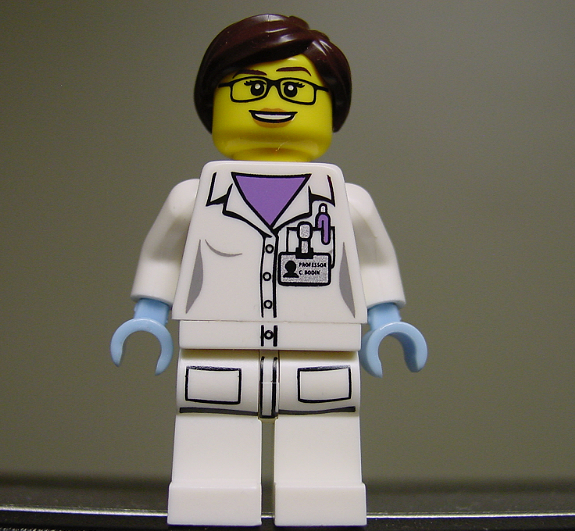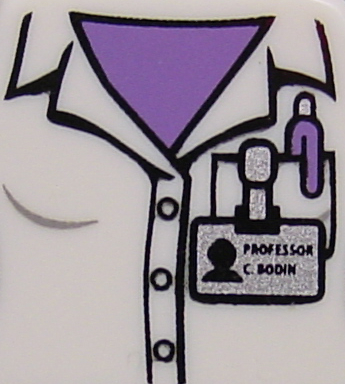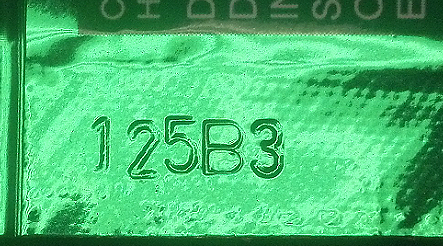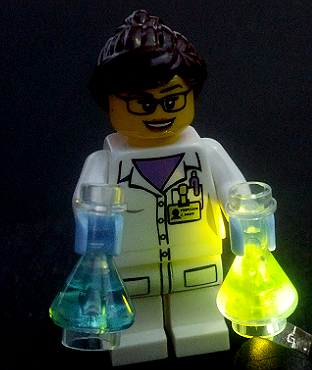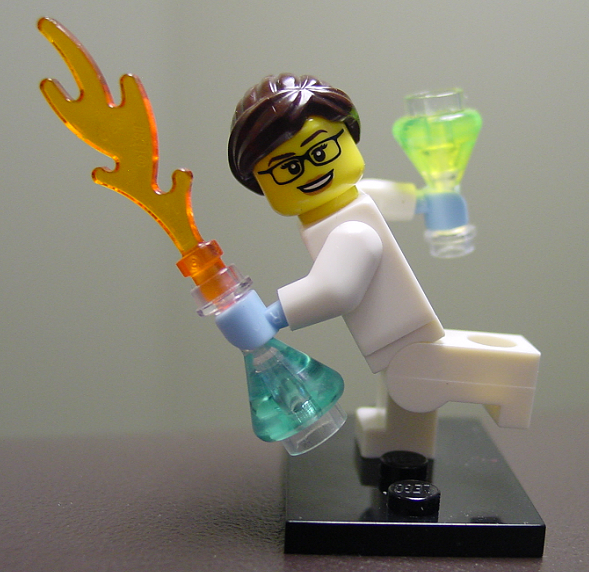LEGO Scientist
Minifigures Series 11, September 2013
Photos, one x-ray, short review and some thoughts
Hi. I'm Alan, contact info below. This is Professor C. Bodin, Scientist, figure 11 of 16, LEGO Minifigure Series 11. None of these are available as part of any set, but come as stand-alone figures with associated accessories, packaged in small opaque packets. They retail for about $3. The bags are marked generically with no obvious indication as to which figure is inside, but there is an external stamped code (see below).
The figure comes with glass labware, two beautiful Erlenmeyer flasks, modified with LEGO attachments. Each contains a solution, one greenish yellow and the other a sort of aquamarine color. Although surely not intentional I imagine I see a magnetic spinbar at the bottom, swirling the solutions.
I want to believe the Scientist is a molecular biologist. I may be biased. The colors of the solutions are more chemistry-like, but I will choose to ignore this.
No one really ever walks with flasks upside down.
On the folded package insert, Scientist is listed as figure 11, between Welder and Saxophone player. I think you're meant to tick the white boxes as you obtain each figure. I don't have much interest in the others.
The bluish Erlenmeyer flask is pictured amidst the hodge-podge of other accessories.
Before I opened it, I took an x-ray of the pack using a digital mammography unit (Hologic, Inc.) I opted for mammography because of the excellent spatial resolution available with such equipment. Most features are pretty clear, the upper torso at bottom, legs upper left, flasks clearly seen on the left. The head is just above the lower flask, and the hair is somewhat obscure, just above that. In the center is a rectangular stand (that isn't required for the figure to stand but is a convenient item.) The larger featureless grey rectangle is the folded package insert.
Technical details of the acquisition.
Professor Bodin wears a 3/4 length white lab coat with notched lapels, and with a single chest pocket and two lower pockets, a type of coat very commonly seen . There are some thoughts in this blog post on the use of white coats, potential scientist stereotyping, STEM and children.
Detail on the coat includes a pen in the chest pocket, and the Professor's ID badge clipped to the pocket. The coat has buttons along the left and the button-hole placket on the right.
I obtained this figure in a round-about sort of way. I knew of the Scientist by the interest that was generated on web articles, blogs and Twitter but wasn't really planning on getting one. I'd never actually bought any LEGO except for a child. So it happened that my 7 yr old son was off for his Autumn half-term and I took him to the LEGO Store on Michigan Avenue. While he looked around and played with stuff, I found this bin full of little packs of Series 11 Minifigs. I decided I wanted to get the Scientist. So while he busied himself, I went through dozens of packs like a mad person, feeling and massaging them up and down to feel for what I'd heard was the sine qua non of the Scientist, the Erlenmeyer flasks. I never convincingly was able to identify them through the packs, but my methods were flawed. Firstly, I imagined the flasks being larger, for some reason maybe twice the size of the head. In retrospect I now know that I found the Scientist, many times, but I wrongly believed those little conical thingies I was feeling were just too small. Big flaw. Also, I was unaware that the Scientist came with the rectangular base, so every time I felt a hard rectangle, I rejected the pack entirely!
I was doing this long enough that I expected eventually one of numerous LEGO employees would come over and ask me wtf I was doing, but no one ever did. I was blocking the whole display. Occasionally an adult customer would stare at me and when I caught their eye they would look away, which made me feel more like a mad person. Finally an employee came over and asked me which one I was looking for, and I soon came to realize that I was not an uncommon occurrence. In fact, he told me that one woman comes in once a week and sometimes spends up to seven hours feeling up the packs, buying dozens, but has never told anyone which one(s) she's interested in. I then bitterly but wrongly concluded that this obsessive mystery person must be hoarding certain ones, including the Scientist. My son, for his part, was fascinated at my stubbornness and at some point offered to help me, but it was clear he was hungry and wanted to get lunch. I then reluctantly concluded, again with great bitterness and with an almost Aesopian heaviness, that there were no Scientists left in this batch, possibly anywhere in America, and that I should just put it out of my mind.
However, later that evening, a friend sent me an eBay link to an auction for a new, unopened Scientist. It had an immediate purchase price of maybe twice the retail price. After shipping, the cost was three times retail. Nevermind, by this point I really wanted one. Few clicks, few days and the Scientist arrived.
Professor Bodin very occasionally works nights as required by the time course of certain experiments. Though a tenured full-professor, Dr Bodin does not hide behind a desk writing grants and planning Powerpoints, but enjoys and is actively involved (and highly skilled) at benchwork.
The same blog post linked above has some comments about portraying scientists as working at night.
Professor Bodin has an identical twin, a chemist, seen here working to contain a particularly exothermic reaction.
LEGO Scientist is a wonderful Minifigure.
If anyone in the sciences wants this and can't obtain it, contact me by Twitter @reply, I have one more Scientist unopened in package I can send you.
.
Professor Bodin's particular area of interest is molecular neuroscience.
.
